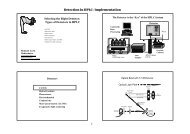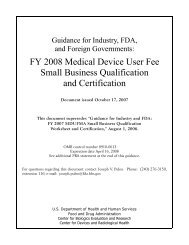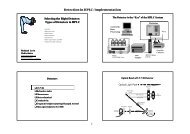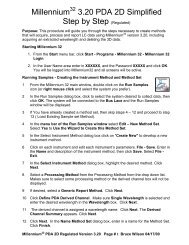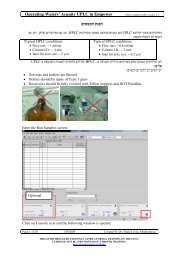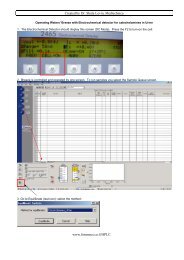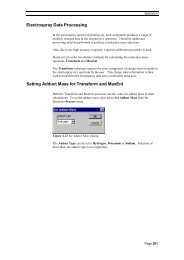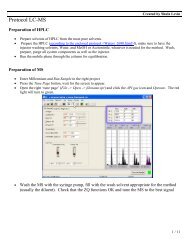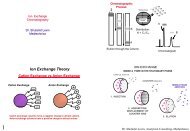You also want an ePaper? Increase the reach of your titles
YUMPU automatically turns print PDFs into web optimized ePapers that Google loves.
6<br />
Strong Wash Solvent<br />
Preparing to Run <strong>UPLC</strong>; Injection and Detection Paramters<br />
Flushes internal and external portion of the needle to prevent<br />
carryover<br />
Typically stronger than sample and mobile phase to dissolve<br />
sample residue<br />
Function performed in the wash station<br />
Strong solvent should be no stronger than the concentration<br />
needed to reduce carryover to an acceptable level<br />
Strong wash solvent does not contact the sample<br />
Weak Wash Solvent<br />
Purges needle and syringe fluid path<br />
Must be compatible with sample solvent<br />
For best results, weak wash solvent should be equivalent to<br />
the following (excluding buffers):<br />
— mobile phase composition (for isocratic separations)<br />
— initial gradient condition (for gradient separations)<br />
— If you dilute the samples, match the weak wash solvent to the<br />
sample diluent<br />
Degassed for good hydraulic properties<br />
Dr. Shula Levin, Medtechnica<br />
Strong Wash Solvent<br />
Choose based on the chemistry application<br />
100% organic solvent is acceptable<br />
— Except THF<br />
— Do not add acid or base in 100% organic solvent<br />
Prime using the needle wash function<br />
Default value is 200 µL<br />
— 200 µL is a typical value for this function<br />
Weak Wash Solvent<br />
Compatible with initial gradient conditions and sample<br />
solubility<br />
Avoid buffers<br />
— increases the risks of precipitation at re-equilibration<br />
Five prime cycles fully replace wash solvents<br />
Default value is 200 µL



